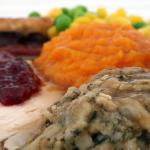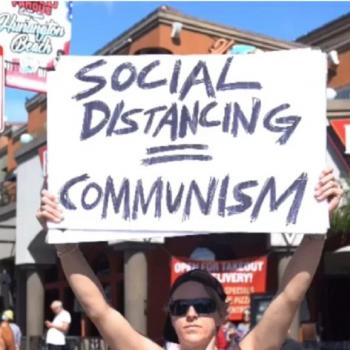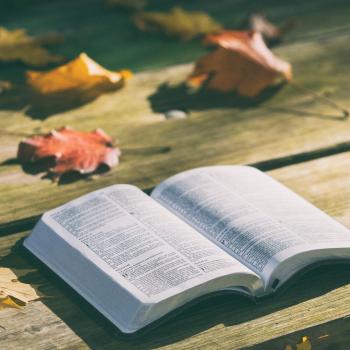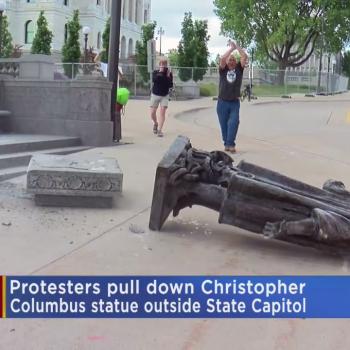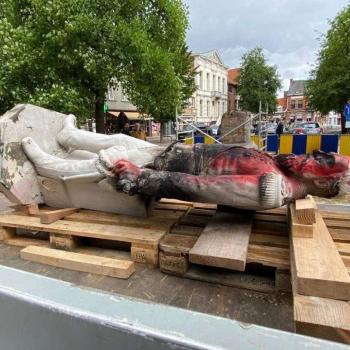I grew up hearing about Squanto and Massasoit and the friendly Native Americans who traded with the Pilgrims and even helped teach them how to get along in their new surroundings. I don’t remember whether I ever asked where those Indians are now, or what happened to them. I certainly don’t remember learning about King Philip’s War. This is a problem. We shouldn’t be able to talk about the first Thanksgiving without also thinking about King Philip’s War. Today we’ll consider what our annual focus on smiling, friendly colonists and Native Americans renders invisible.
King Philip’s War, which took place in 1675-76, was not the first conflict between colonists and Native Americans in New England. The Pequot War took place in 1636-38 in Connecticut. The conflict had begun as a trade dispute; the Pequot besieged several Connecticut towns and killed around 30 colonists. The colonists raised a militia and besieged a Pequot fort at Mystic, in Connecticut. The English commander ordered that the settlement be set on fire and then blocked the two entrances, trapping those within; those who attempted to climb over the walls were shot. Of 500 Pequot, most of them women, children, and elderly (the warriors had left on a raid), only 14 survived.

Some of the colonists’ Native American allies in the war against the Pequot, present at the massacre, were horrified by what they saw. They declared that “the manner of the Englishmen’s fight” was “too furious, and slays too many men.” The massacre would live in Native American memory for a long time. While the Pequot leader, Sassacus, went on fighting, the Mystic Massacre effectively ended the conflict. Several hundred of the remaining Pequot were captured and sold as slaves in the West Indies, and the tribe was declared extinct. This war would not be soon forgotten.
What about King Philip’s War? Under Massasoit, the Wampanoag had lived at peace with the colonists since the Pilgrims landed in 1620. Metacomet, Massasoit’s son, became chief of the Wampanoag in 1662. During this decade tensions began to rise as the balance of power between the colonists and the Native Americans shifted; new treaties demanded the surrender of Indian guns, and the Wampanoag, who had lost much of their land to the colonists, feared losing more. Metacomet, also known as King Philip, began making alliances with other tribes in preparation for war.
War broke out in 1675 after the the colonists tried and executed three of King Philip’s men for the murder. In retaliation, the Wampanoag and their allies began attacking English settlements across Massachusetts.
The Narragansett remained neutral, but refused to hand over any Wampanoag who took shelter with them to the colonists, so the colonists called up a militia and marched to attack the primary Narragansett settlement, a fort in a swamp. It was December and bitterly cold. The colonists stormed the fort, breached it, and lit it on fire. It is estimated that 600 of the 1,000 people in the settlement (many women, children, and elderly) were killed in the confrontation, and that hundreds more died of exposure in the cold.

After this atrocity, the previously neutral tribes of New England joined forces with King Philip. The surviving Narragansett, enraged, attacked and burned English settlements across New England. This in turn forced the remaining colonies that had sought to remain neutral in the conflict, such as Rhode Island, into the war.
In May 1676, an English militia of 150 attacked an Indian camp at Turners Falls, Massachusetts. It wasn’t a military camp; it was a fishing camp on a river. Several hundred Native Americans were in residence, fishing. The militia surprised them in the middle of the night, shooting into wigwams and setting fire to the settlement; all of those int he camp were killed. Native American men from surrounding settlements quickly rallied and fired on the militia on its return journey, killing 38 English colonists.
The colonists far outnumbered the Native Americans, however, and the Native American alliance began to fall apart as the colonists’ mounted stiff resistance to their raids and as large numbers of King Philip’s soldiers were captured and sold into slavery in the West Indies. The Native Americans were defeated; the tribes, which had already been greatly reduced by disease over several generations, never recovered. This effectively marked the end of Native American sovereignty in New England.
King Philip’s wife and nine-year-old son were captured and, after King Philip’s death, sold into slavery in the West Indies. King Philip was drawn and quartered, and his head stood on a spike outside of Plymouth for two decades. It is estimated that over 50% of the Native American population in New England died during the war or were sold into slavery in the West Indies.
I suspect that at least some of you here, reading this, have never heard of King Philip’s War. Others have likely heard of the war but did not remember that King Philip was the son of Massasoit—you may remember him as the friendly Indian chief who came to the first Thanksgiving with his warriors, bringing venison to share.

What does it mean about us as a society, that we talk about the first Thanksgiving, about friendship between the colonists and the native population, but not about King Philip’s War, or the ultimate fate of these natives? It is not as though these two events—the first Thanksgiving and King Philip’s War—are wholly separate and unconnected. King Philip, after all, was Massasoit’s son.
We should not be able to talk about Massasoit and his friendly relations with the Pilgrims without acknowledging that his son and successor began a war against the colonists in an effort to drive them from their land. We need to talk about that because we need to talk about why, and about colonization, and about genocide. We’re going to have trouble talking about those things if we are fixated on smiling colonists and natives eating and working together. If that is our only picture, the framework through which we understand the colonial period of our history, we can’t grapple with what went wrong.
Our memories are selective. We like to remember what makes us feel good, warm and fuzzy inside. We like to look at pictures of smiling Native Americans and colonists sharing food. It makes us feel good. We don’t like to think about what happened next.
And that’s a problem.
I have a Patreon! Please support my writing!

